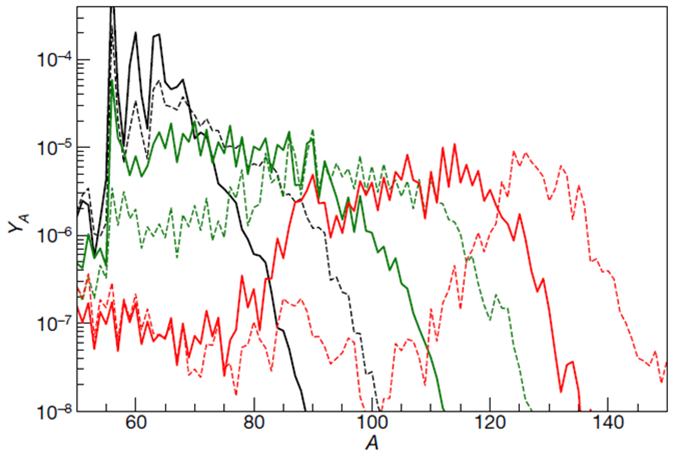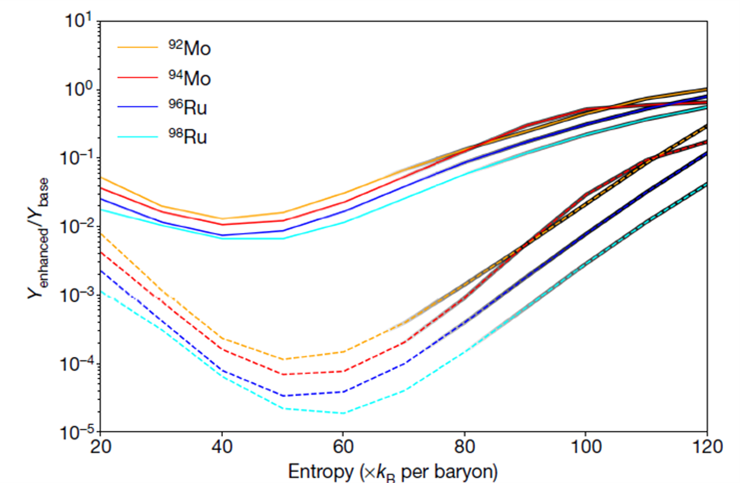
In a recent study published in Nature, scientists reveal that the enhanced triple-alpha reaction in the high temperature and high density environment increases the production of 12C, which reduces the robustness of proton-rich nucleosynthesis in supernovae. Their findings change a long-standing view on the origin of molybdenum (Mo) and ruthenium (Ru) isotopes.
This work was achieved by JIN Shilun, an associated research professor from the Institute of Modern Physics of the Chinese Academy of Sciences and scientists from the National Superconduct Cyclotron Laboratory at Michigan State University.
The triple-alpha reaction is the most important reaction in many ways. It defines our existence. Almost all the elements around the earth are forged in stars. The triple-alpha reaction in stars fuses three alpha particles into 12C, bypasses the mass gap A=5 and 8, and creates the most significant element of life.
In the meanwhile, after a series of burning processes in massive stars, 12C sacrifices itself as the seed for latter heavy element nucleosynthesis in supernovae, contributing the birth of chemical elements from Iron to Uranium in cosmos.
By implementing the enhanced triple-alpha reaction on the scenario of the neutrino proton capture process, the researchers run the element evolution with SkyNet with huge computations. It was found that the nucleosynthesis is suppressed.
In previous studies, some isotopes, like 92,94Mo and 96,98Ru were thought to be created only in the neutrino proton capture process. However, the present calculation shows that these nuclides are underproduced after the enhanced triple-alpha reaction is considered. This conclusion destroys previous theory, and indicates more investigation is required to explore their origin.

Fig.1 While Ye=0.6, τ=10ms, S=80 (black), 140 (green), 200 (red), solid lines presents the abundances with the enhanced triple-alpha reaction, and dashed lines without it. All the nucleosynthesis results are suppressed, and the border of mass are decreased around 10 to 20. (Image by JIN Shilun)

Fig.2 The relative ratio of production of 92,94Mo and 96,98Ru as a function of entropy with and without the enhanced triple-alpha reaction. Solid lines use the nominal value of the enhancement, while dashed lines use the upper limit of the uncertainty. Both of them show descent with one or more magnitudes. (Image by JIN Shilun)

86-10-68597521 (day)
86-10-68597289 (night)

52 Sanlihe Rd., Xicheng District,
Beijing, China (100864)

